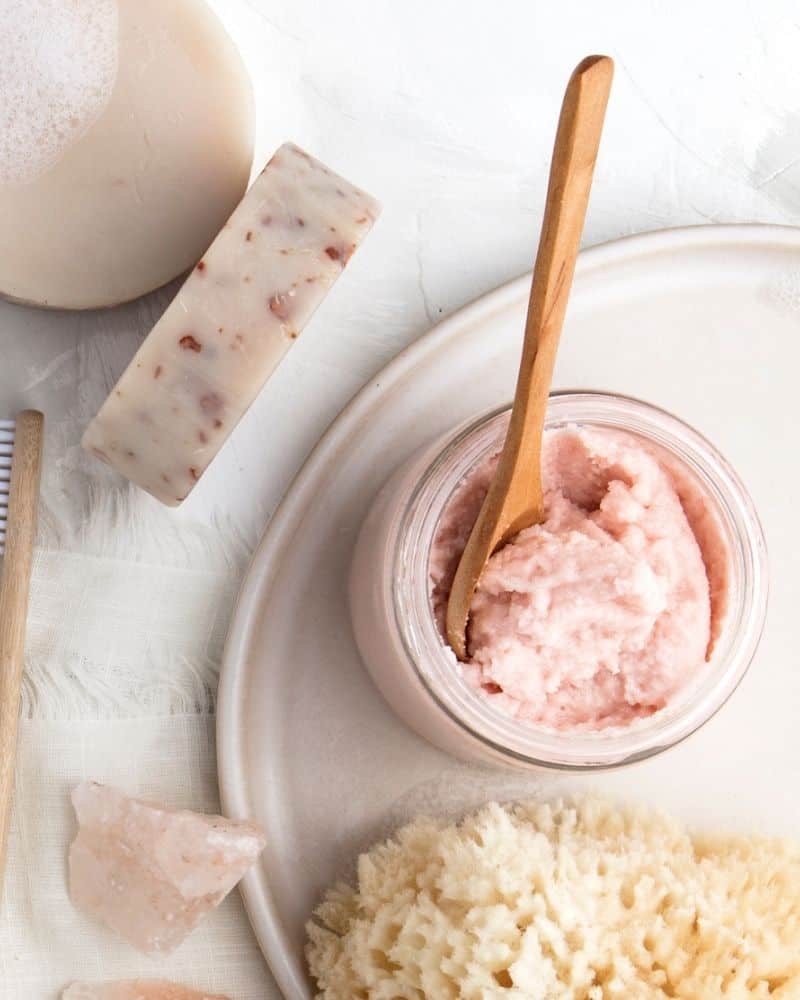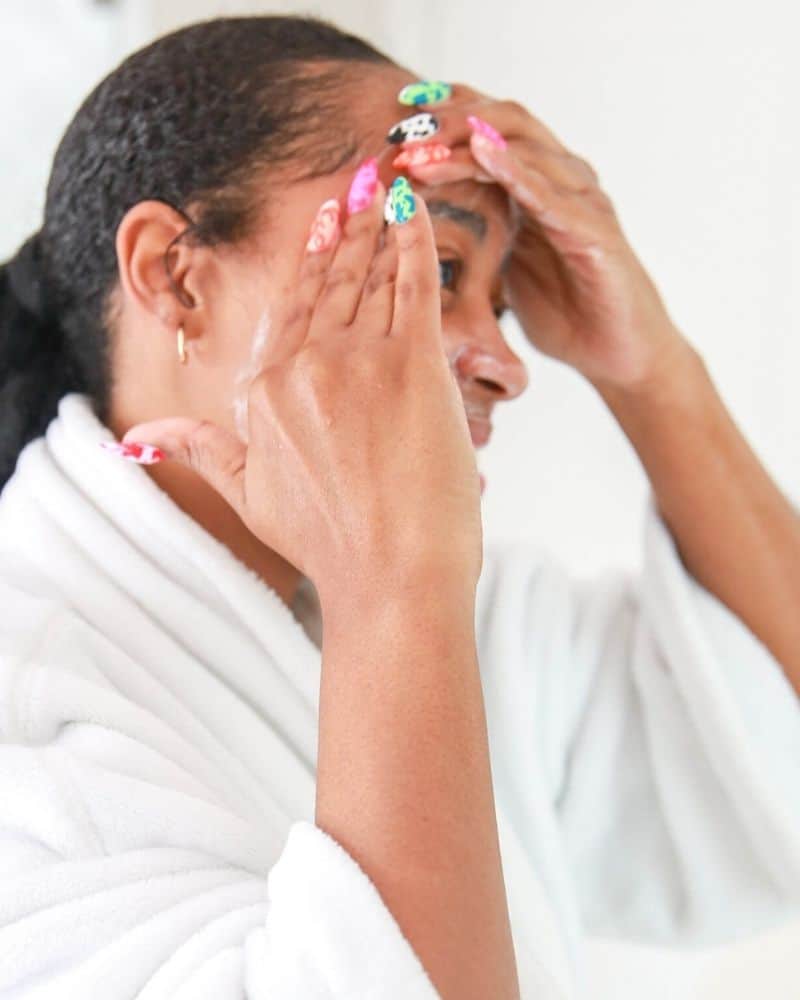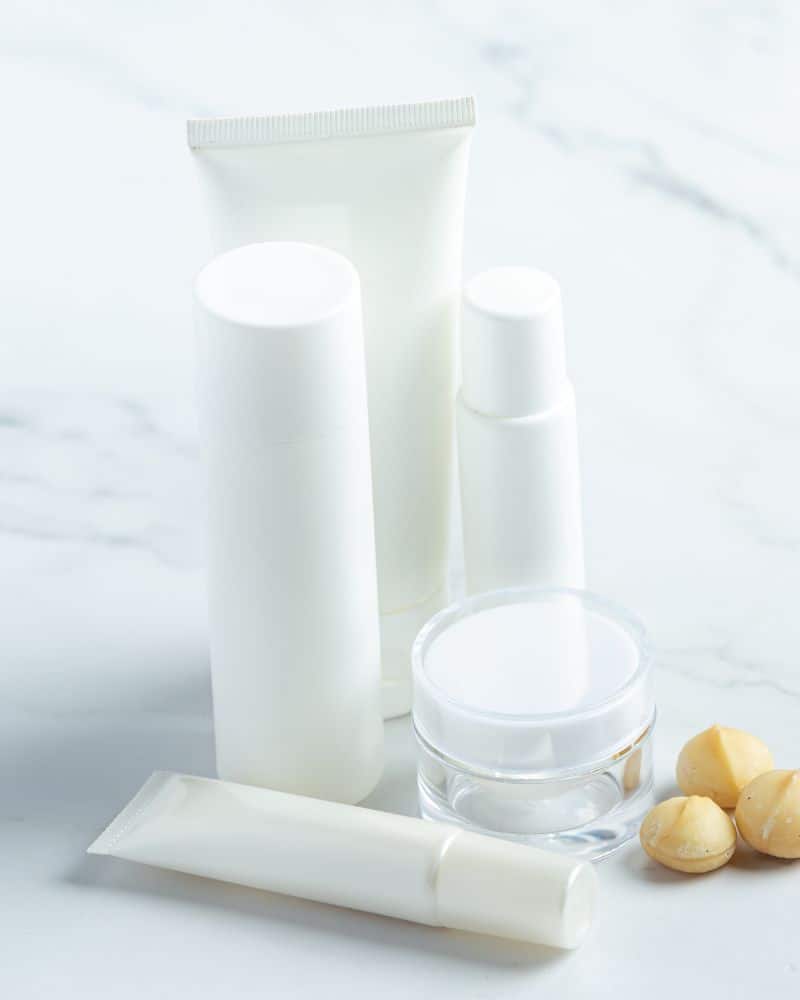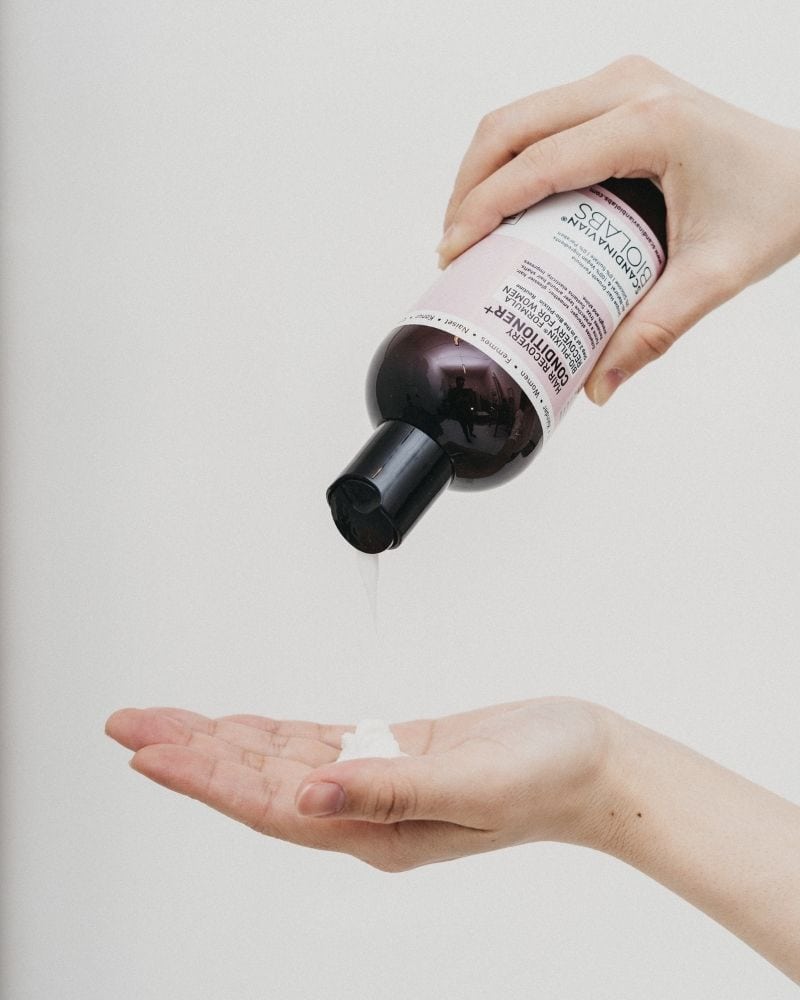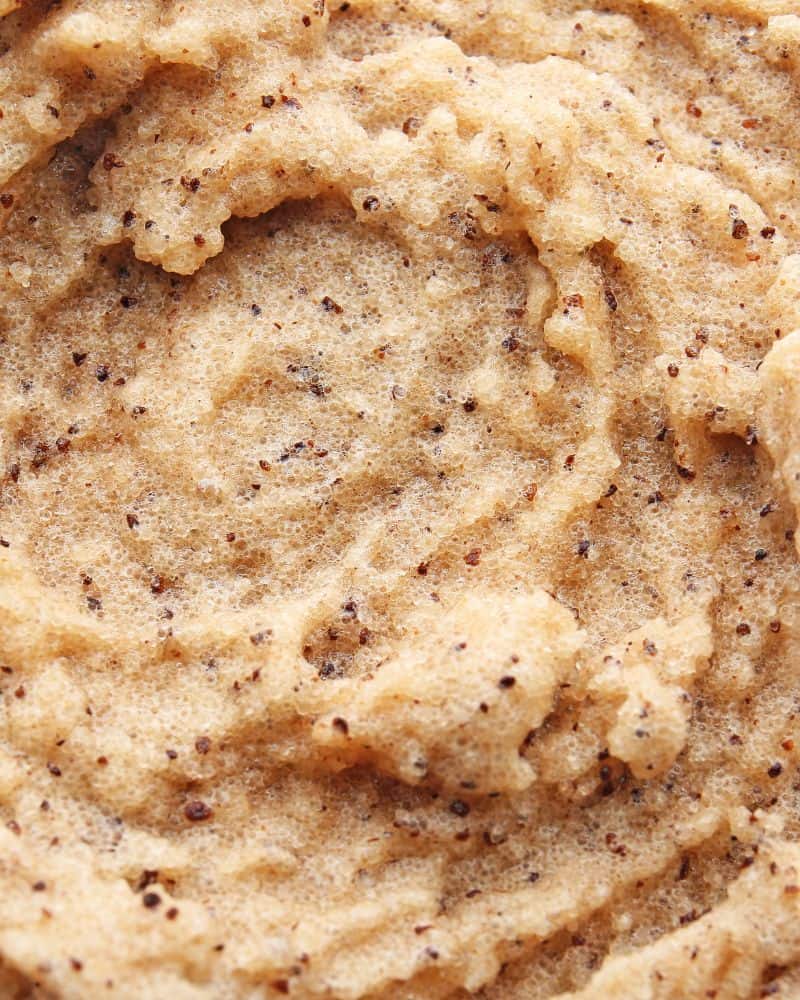Does CeraVe Moisturizing Cream Cause Acne?
This post may contain affiliate links.

CeraVe moisturizing cream is a popular drugstore moisturizer that’s recommended by dermatologists and skincare enthusiasts alike. However, some users have claimed that the cream caused them to breakout even though it’s marketed as non-comedogenic and safe for all skin types. So does CeraVe Moisturizing Cream cause acne or clogged pores? We’ll take an in-depth look at this product, its ingredients and the comedogencity rating.
About CeraVe Moisturizing Cream
CeraVe is a drugstore skincare brand that is known for its well-formulated products with ingredients that are backed by science – meaning effective formulas at a low cost. The brand is most often recommended by dermatologists, especially for those with dry skin.
CeraVe has since expanded their lines and now offer products for baby, acne, eczema and more.
The moisturizing cream, also known as CeraVe in the tub, is a cult-favorite and top rated moisturizer. It’s rich and feels silky but is a powerful moisturizer that can repair even the driest skin. It can also help to repair and strengthen the skin barrier to prevent dryness and dehydration. Packed with Ceramides, Hyaluronic Acid and many other skin-loving ingredients, this is one of the best moisturizers on the market.
The CeraVe Moisturizing Cream is a barrier-strengthening and hydrating moisturizing cream that can be used on the face or body. It’s fragrance free, non-comedogenic and probably one of the most dermatologist-recommended moisturizers on the market.
Most of CeraVe’s moisturizers use their patented MVE Technology which is a special delivery system that releases moisturizing ingredients in the cream over a 24 hour period.
CeraVe Moisturizing Cream Ingredients
Here’s the full breakdown of ingredients in the moisturizing cream:
AQUA / WATER / EAU, GLYCERIN, CETEARYL ALCOHOL, CAPRYLIC/CAPRIC TRIGLYCERIDE, CETYL ALCOHOL, CETEARETH-20, PETROLATUM, POTASSIUM PHOSPHATE, CERAMIDE NP, CERAMIDE AP, CERAMIDE EOP, CARBOMER, DIMETHICONE, BEHENTRIMONIUM METHOSULFATE, SODIUM LAUROYL LACTYLATE, SODIUM HYALURONATE, CHOLESTEROL, PHENOXYETHANOL, DISODIUM EDTA, DIPOTASSIUM PHOSPHATE, TOCOPHEROL, PHYTOSPHINGOSINE, XANTHAN GUM, ETHYLHEXYLGLYCERIN
While many of these ingredients are stabilizers, formula enhancers or other ingredients used to make a nice feeling product, there are a ton of great ingredients for the skin. Let’s take a look:
- Glycerin – One of the best humectants, which means it helps our skin hold onto water, which keeps the skin hydrated and plump and the skin barrier strong. Glycerin is also known to have soothing and barrier strengthening properties and is one of the best ingredients for treating dry skin
- Hyaluronic Acid – Hyaluronic acid is another humectant that can help skin hold on to its water content. In fact, hyaluronic acid can hold up to 1000x its weight in water! Hyaluronic acid instantly plumps the skin and can fill in lines and wrinkles and minimize pores
- Ceramides – Ceramides are another key component in the skin’s structure. They help to repair and strengthen the skin’s moisture barrier and keep hydration locked in to prevent dehydration and dryness
- Petroleum – Petroleum jelly, or Vaseline, is one of the most popular occlusives in the skincare industry – it’s effective, safe and doesn’t clog pores. Occlusives help to lock in moisture and keep it from escaping and leaving the skin dehydrated and dry
- Cholesterol – Cholesterol is an extremely important component of our skin. It’s naturally found in the outer layers and is designed to help keep the skin barrier strong and healthy while keeping moisture locked in
- Tocopherol – Also known as Vitamin E, Tocopherol is an antioxidant that can help protect the skin from free radical damage. It also has soothing and moisturizing properties to help soften the skin, reduce redness and calm irritation
- Phytosphingosine – Is a type of lipid, or fat, that is naturally found in our skin. It’s a part of the skin barrier, so when used in skincare products, it can help keep your protective barrier strong and healthy. It’s been shown that Phytosphingosine can help increase moisture levels in the skin and also has anti-inflammatory properties
Does CeraVe Moisturizing Cream Cause Acne?

In short, it’s unlikely that the CeraVe Moisturizing Cream will cause acne. It was formulated by dermatologists to be suitable for all skin types and is non-comedogenic.
While CeraVe Moisturizing Cream is non-comedogenic and unlikely to cause breakouts, everyone’s skin reacts differently so be sure to do a patch test if you’re concerned about breakouts. Some people might experience breakouts from certain ingredients, while others do not. Even though a product is rated as non-comedogenic, there is still a chance that your skin just won’t like that particular product or ingredient.
Does CeraVe Moisturizing Cream Cause Fungal Acne?
Unfortunately, the CeraVe Moisturizing Cream is not fungal acne safe, meaning it has ingredients that can cause fungal acne. Caprylic/Capric Triglyceride is the only ingredient that is a suspected fungal acne trigger for some people.
Does CeraVe Moisturizing Cream Help Acne?
CeraVe Moisturizing Cream does not contain any chemical exfoliants or acne-fighting ingredients that are typically used to treat acne. However, it does contain some anti-inflammatory ingredients like hyaluronic acid and Phytosphingosine which can help to reduce inflammation like redness and swelling associated with breakouts and acne.
It also helps to keep your skin moisturized and your skin barrier strong and healthy, which can indirectly help to prevent acne. When your skin barrier is damaged or compromised, your skin is more susceptible to irritants and other bacteria which can lead to an increase in breakouts.
Additionally, when your skin is dry or dehydrated, your skin will overproduce oil to try to compensate, which can lead to an increase in breakouts.
Overall, CeraVe Moisturizing Cream can help keep your skin healthy and reduce inflammation, but it won’t directly treat existing breakouts.
Related post: Does CeraVe Healing Ointment Cause Acne?
Does CeraVe Moisturizing Cream Cause Purging?
Since CeraVe Moisturizing Cream does not contain any active ingredients like retinol or salicylic acid, it will not cause purging. Purging happens when you use active ingredients that exfoliate the skin like retinol, azelaic acid, AHA’s/BHA’s, or benzoyl peroxide. Since this cream does not contain any exfoliating ingredients like this, it will not cause purging.
Related post: Does Azelaic Acid Cause Purging?
Does CeraVe Moisturizing Cream Clog Pores?
CeraVe Moisturizing Cream is rated as non-comedogenic, meaning it does not contain ingredients that are likely to clog your pores. In fact, it contains many ingredients that are naturally found in our skin like ceramides, hyaluronic acid, glycerin, cholesterol and phytosphingosine. This means it’s highly unlikely for any of these ingredients to cause clogged pores.
However, there is some talk, especially among Reddit groups that the CeraVe Moisturizing Cream can cause breakouts and reactions due to the fatty alcohols. Fatty alcohols are an ingredient in many skincare products that are commonly used to help moisturize the skin but can also help to emulsify and thicken products. While these can help to make your skincare products feel more luxurious, they can also cause irritation in some people, especially if you have sensitive or acne-prone skin.
CeraVe Moisturizing Cream contains Cetyl alcohol, Cetearyl alcohol and Ceteareth-20. A study that tested the comedogenicity and irritancy of common skincare ingredients rated the following for these fatty alcohols:
| Ingredient | Comedogenicity Rating | Irritancy Rating |
|---|---|---|
| Cetyl alcohol | 2 | 2 |
| Cetearyl alcohol | 2 | 1 |
| Ceteareth-20 | 2 | 3 |
Another study tested 147 patients and 23% had a reaction to fatty alcohols. It’s been shown in many studies that reactions to these fatty alcohols are fairly common, especially among those with sensitive skin. While most of the time a contact dermatitis reaction is caused by fatty alcohols, many people on Reddit boards have claimed that the fatty alcohols actually caused breakouts, clogged pores and acne.
Keep in mind that everyone’s skin is different and that there are many other ingredients in CeraVe Moisturizing Cream that may not cause irritation or breakouts. And this is an incredibly popular, HG product for many who can use it without any issues. However, if you have sensitive or acne-prone skin it might be a good idea to patch test this product if you are concerned about a reaction or breakouts.
Related post: Why Does CeraVe Make My Skin Sting
What Is The Comedogenicity Rating Of CeraVe Moisturizing Cream?
While CeraVe claims that this product is non-comedogenic, it does have some ingredients that are rated 2-3 on the comedogenicity scale. Those being the 3 fatty alcohols mentioned above and Tocopherol (also known as Vitamin E). While there’s no set comedogenicity rating of the CeraVe Moisturizing Cream, taking a look at the comedogenicity rating of all of its ingredients, it’s safe to say this cream is relatively non-comedogenic and has a low potential for clogged pores.
Is CeraVe Moisturizing Cream Good For Acne Scars?
Since CeraVe Moisturizing Cream does not contain any active ingredients that help to exfoliate or brighten the skin, it is not particularly good for acne scars. If you are looking for a product that can help to improve acne scars or blemishes, look for something that contains retinol, azelaic acid or vitamin c.
Does CeraVe Moisturizing Cream Cause Milia?
Milia is a common skin condition that usually develops when the dead skin cells become trapped under the surface of the skin. This can be caused by wearing heavy makeup or skincare products with pore clogging ingredients, among other causes. Since everyone’s skin is different, it’s hard to say if CeraVe Moisturizing Cream will cause milia or not. You can always do a patch test by applying a small amount on your skin for several days and monitoring for any reactions or milia bumps.
Does CeraVe Moisturizing Cream Cause Breakouts FAQ’s
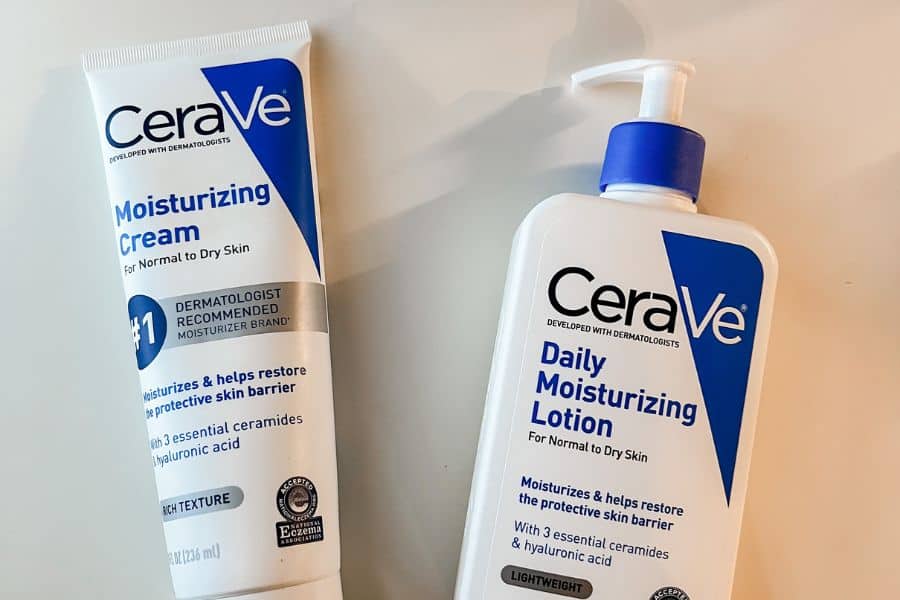
Is CeraVe Moisturising cream good for acne prone skin?
CeraVe is a great moisturizing cream for those with dry to normal acne-prone skin types. Those with oily or combination skin may find this moisturizer a little too heavy for their skin type.
Is CeraVe Moisturizing Cream Oil Free?
Yes, the CeraVe Moisturizing Cream is oil-free.
Why is CeraVe moisturizer making me break out?
It’s possible that the fatty alcohols in CeraVe moisturizer may be causing breakouts for your skin. Many people with sensitive or acne-prone skin are irritated by these ingredients, but it could be any of the ingredients in the product that are causing your breakouts.
Does CeraVe Moisturizing Cream Cause Acne Wrap Up
CeraVe Moisturizing Cream is accessible, affordable and packed with amazing ingredients that help to nourish the skin, strengthen the skin barrier and moisturize dry, flaky skin. It’s no wonder it’s one of the most popular drugstore moisturizers on the market! However, many people wonder, does Cerave Moisturizing Cream make you breakout? Although it does contain some ingredients that are rated 2-3 on the comedogenicity scale, it is a relatively non-comedogenic cream with a low potential for clogged pores or breakouts. If you have sensitive or acne-prone skin, it might be a good idea to patch test this product before using it.
